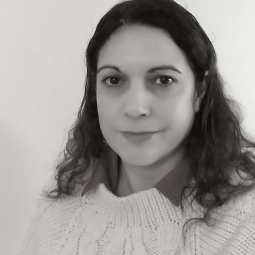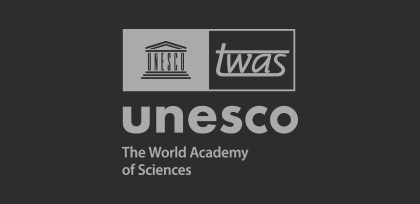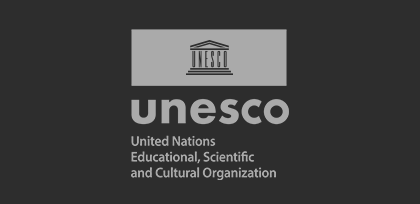Member Profile

Membership type: full
Natalia Pacioni
Country of origin: Argentina Currently in: Argentina, Córdoba General field of specialization: Chemical Sciences-
Degrees
2007 Doctorate Chemical Sciences -
Current Research Activities
Chemical Sciences
(Supramolecular) Analytical Chemistry, Chemical sensors, Metal nanoparticles, Molecular and Supramolecular switches, Physical Organic Chemistry
Publications resulting from Research:
24- MultiShapeC, an algorithm to assess concentration in multi-shape nanoparticle samples: Nanosilver, a case study.”. R.N. Núñez, A.V. Veglia y N.L. Pacioni* (RSC Advances 12, 2022, 26550-26555, https://doi.org/10.1039/D2RA04078F).
23- Design, Implementation, and Evaluation of a Game-based Application for Aiding Students to Review the Organic Reactions” da Silva Júnior, José*; Sousa Lima, Mary; Pimenta, Antonia; Miranda, Fátima; Monteiro, Alvaro; Melo Leite Junior, Antonio Jose; Zampieri, Dávila; Silva de Sousa, Ulisses; Pacioni, Natalia; Winum, Jean-Yves; Alexandre, Francisco. Education for Chemical Engineers 34, 2021, 106-114. ( https://doi.org/10.1016/j.ece.2020.11.007).
22- The fluorescence quenching of rhodamine 6G as an alternative sensing strategy for the quantification of silver and gold nanoparticles”. M.A. Molina Torres, A.V. Veglia y N.L. Pacioni*, Microchemical Journal 160, 2021, 105645
(https://doi.org/10.1016/j.microc.2020.105645).
21-"Integrating Chemical Security into Chemistry Degree Programs in Argentina through an Interactive One-Day Course Addressing Illicit or Harmful Applications of Chemistry Knowledge.” Natalia L. Pacioni,* Daniel A. Caminos, Tomas C. Tempesti y M. Constanza Paz. Journal of Chemical Education 97 (7), 2020, 1789-1794 , (https://doi.org/10.1021/acs.jchemed.9b00799)
20- “Nanoparticle Concentration vs. Surface Area in the Interaction of Thiol Containing Molecules: Towards a Rational Nano-Architectural Design of Hybrid-Materials” K. Goel, C. Lazurko, E. Jacques, M. Zuñiga-Bustos, C. Galaz-Araya, F. Valenzuela-Henriquez, N. L. Pacioni, J.F. Couture, H. Poblete y Emilio I. Alarcon*. ACS Applied Materials & Interfaces, 11 (19), 2019, 17697-17705 ( doi:10.1021/acsami.9b03942)
19- “Role of a Cystine-based Gemini Surfactant Ligand in the Synthesis of Catalytic Active Silver Nanoparticles” M.A. Molina Torres, E. Pachón Gómez, M.A. Fernández, A.V. Veglia y N.L. Pacioni* J. Molecular Liquids 284, 2019, 110-116 (https://doi.org/10.1016/j.molliq.2019.03.168)
18- Improving reproducibility between batches of silver nanoparticles using an experimental design approach. Rodrigo N. Núñez, Alicia V. Veglia y Natalia L. Pacioni*. Microchemical Journal 141, 2018, 110-117. (https://doi.org/10.1016/j.microc.2018.05.017)
17. “Association models for the binding of molecules to nanostructures” Manuel Ahumada, Eduardo Lissi, Ana María Montagut, Francisco J. Valenzuela-Henriquez, Natalia L. Pacioni* y Emilio I. Alarcón*. Analyst 142, 2017, 2067-2089. (http://pubs.rsc.org/en/content/articlelanding/2017/an/c7an00288b#!divAbstract).
16. “Spherical Silver Nanoparticles in the Detection of Thermally Denatured Collagens.” Manuel Ahumada, S. McLaughlin, Natalia L. Pacioni* y Emilio I. Alarcón*. Analytical and Bioanalytical Chemistry, 408 (8), 2016, 1993-1996 (disponible on line 4 de Febrero de 2016 http://link.springer.com/article/10.1007/s00216-016-9330-5.)
15. “Analytical Strategy to Detect Metal Nanoparticles in Mixtures without Previous Separation” Natalia L. Pacioni* y Alicia V. Veglia*. Sensors and Actuators B. Chemical 228 (2016) 557-564. (http://dx.doi.org/10.1016/j.snb.2016.01.064)
14. “Gold Nanoparticle Catalysis of the Cis-Trans Isomerization of Azobenzene” Geniece L. Hallett-Tapley, Claudio D’Alfonso, Natalia L. Pacioni, Christopher D. McTeirnan, María González-Béjar, O. Lanzalunga, Emilio I. Alarcón, J.C. Scaiano*. Chemical Communications. 49, 2013, 10073-10075.
13. “Oxidation of copper nanoparticles in water: Mechanistic insights revealed by oxygen uptake and spectroscopic methods”. Natalia L. Pacioni, Vasilisa Fillipenko, Nathalie Presseau y J.C. Scaiano*. Dalton Transactions 46 (12), 2013, 5832-5838.
12. “Human serum albumin as protecting agent of silver nanoparticles: role of the protein conformation and amine groups in the nanoparticle stabilization”. Emilio I. Alarcon, Carlos J. Bueno-Alejo, Christopher W. Noel, Kevin G. Stamplecoskie, Natalia L. Pacioni, Horacio Poblete y J. C. Scaiano*. Journal of Nanoparticle Research 15, 2013, art. 1374.
11.“Structural Characterization of N-methylcarbamate-cyclodextrin Complexes by experimental methods and molecular dynamics simulations”. Natalia L. Pacioni, Adriana B. Pierini y Alicia V. Veglia*. Spectrochim. Acta Part A 103, 2013, 319-324. http://dx.doi.org/10.1016/j.saa.2012.11.004
10. “Ultraclean custom-derivatized monodisperse gold nanoparticles through laser drop ablation of polymorph gold
nanostructures”. Carlos J. Bueno-Alejo, Claudio D'Alfonso, Natalia L. Pacioni, Emilio Alarcón, María González-Béjar, Michel Grenier, Osvaldo Lanzalunga y Juan C. Scaiano*. Langmuir 28, 2012, 8183-8189.
9. “The Biocompatibility and Antibacterial Properties of Collagen-stabilized, Photochemically Prepared Silver Nanoparticles” Emilio Alarcon, Klas Udekwu, Mårten Skog, Natalia L. Pacioni, Kevin G. Stamplecoskie, María González‐Béjar, Naresh Polisetti, Abeni Wickham, Agneta Richter‐Dahlfors, May Griffith y Juan C. Scaiano*. Biomaterials 33, 2012, (19), 4947-4956.
8. “Plasmon-Mediated Photopolymerization Maps Plasmon Fields for Silver Nanoparticles.” Kevin G. Stamplecoskie, Natalia L. Pacioni, Dayle Larson, y Juan C. Scaiano, J. Am. Chem. Soc., 133, 2011, (24), 9160–9163.
7.“Tuning plasmon transitions and their applications in organic photochemistry”. J.C. Scaiano*, José C. Netto-Ferreira, Emilio Alarcon, Paul Billone, Matthew Decan, María González-Béjar, Geniece Hallett-Tapley, Michel Grenier, Katherine L. McGilvray, Charles O’Neil Crites, Natalia L. Pacioni, Andrea Pardoe, Laetitia René-Boisneuf, Rachel Schwartz-Narbonne, Jazmin Silvero, Kevin G. Stamplecoskie y Tse-Luen Wee. Pure and App. Chem. 83, 2011, (4), 913-930.
6.“Surface Plasmons Control the Dynamics of Excited Triplet States in the Presence of Gold Nanoparticles”. Natalia L. Pacioni, María González-Béjar, Emilio Alarcón, Katherine L. McGilvray y J. C. Scaiano. J. Am. Chem. Soc., 132, 2010, (18) 6298-6299.
5.“Synthesis of Copper Nanoparticles Mediated by Photogenerated Free Radicals. Catalytic role of chloride anions”. Natalia L. Pacioni, Andrea Pardoe, Katherine L. McGilvray, Michelle N. Chrétien y Juan C.Scaiano*. Photochem. Photobiolol. Sciences, 9, 2010, (6) 766-774.
4.“Spectrofluorimetric determination of benzoimidazolic pesticides. Effect of calixarenes and cyclodextrins.” N. L. Pacioni, V. Sueldo Occello, Márcio Lazzarotto y A.V. Veglia*. Anal. Chim. Acta. 624, 2008, (1), 133-140.
3. “Comparative effects of cyclodextrins versus organic solvents on the fluorescence of indole and carbamate compounds”. N. L. Pacioni, A.G. Bracamonte y A.V. Veglia*. J. Phochem. Photobiol. A 198, 2008, (2-3), 179-185.
2.“Determination of poorly fluorescent carbamate pesticides in water, bendiocarb and promecarb using cyclodextrins nanocavities and related media.” N. L. Pacioni y A.V. Veglia*, Anal. Chim. Acta. 583, 2007, (1), 63-71.
1.“Determination of Carbaryl and Carbofuran in fruits and tap water by beta-cyclodextrin enhanced fluorimetric method”. N. L. Pacioni y A. V. Veglia*, Anal. Chim. Acta 488, 2003, (2), 193-202.
Current profession
Current professional activities type:ResearchTeachingIndependent Researcher (CONICET), Adjunct Professor (Facultad de Ciencias Químicas, Universidad Nacional de Córdoba) in charge of the following courses: Laboratory IV, Analytical Methods and Ethics and Legislation in Biotechnology.
Affiliations
Asociación Argentina de Químicos Analíticos (AAQA)Sociedad Argentina de Química Orgánica (SAIQO) -
Other Awards
Jan 2013G. Cilento Award 2012Professor Giuseppe Cilento was one of the foremost scientists in South America and a pioneer in photobiology. His research at the Institute of Chemistry of the University of Sao Paulo demonstrated conclusively that excited triplet states can be generated enzymatically and he had the foresight to perceive that these could be reactive intermediates of importance in biology. Cilento excelled as a mentor and many of his former students and post-doctoral associates hold academic positions in Brazil and other countries. The breadth of their research interests is a direct reflection of Cilento's interdisciplinary approach to science. The G. Cilento Award was created as a result of the first I-APS South American Meeting in Iguazu Falls in 1996 with the objective of facilitating the participation of young (up to age 35) scientists and students working in Latin America in the I-APS Annual Conferences. Source: http://www.i-aps.org/awards.asp#G._Cilento_AwardDec 2002Premio Universidad (Mención Especial)For being 2nd in the GPA rank of the degree program in 'Licenciatura' in Chemistry. This award in given by the Universidad Nacional de Córdoba.






